Most people seem to fall in love with bold-colored flowering plants. Unfortunately, nature lacks some unique magical colored flowers like blue. Orchids are a group of well-known plants for their vibrant and lovely flowers. Like other plants, orchids also have a scarcity of blue blooms except for some blue orchids. In this article, let’s discuss about dyeing orchids blue.
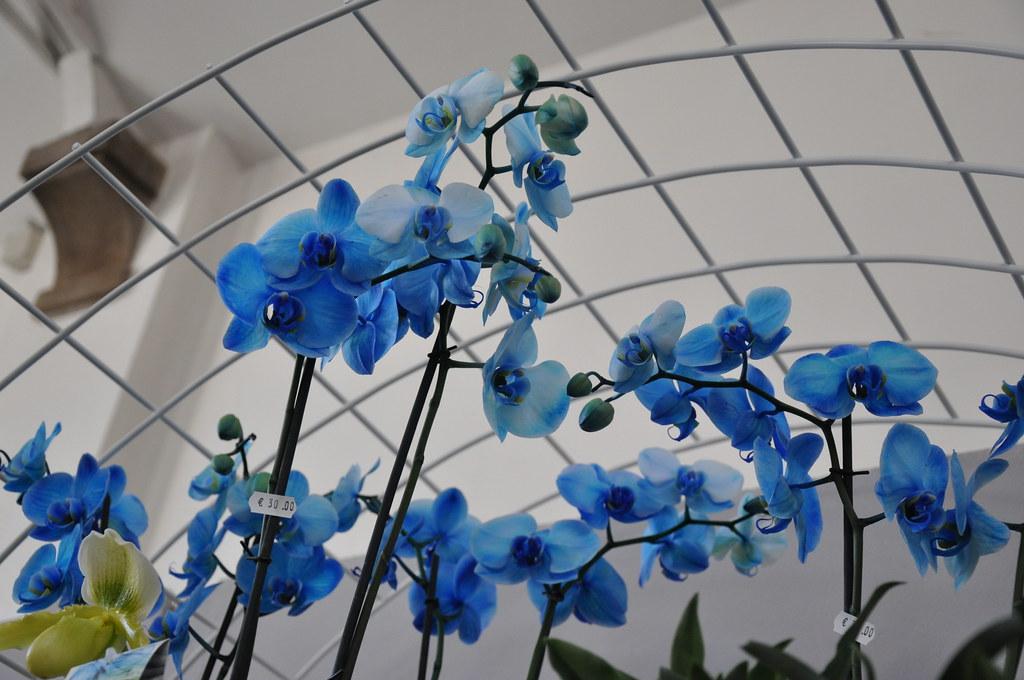
Phalaenopsis Blue Star
Due to the rarity of blue orchids, botanists gave rise to orchid hybrids with some dyeing methods. Now the question arises how stunning dyeing orchids blue is possible in hassle-free fun ways? To get the answer, we need to jump into crucial comprehensive detail given below:
Which Orchids Are Best for Dyeing Blue
According to cultivars and botanists, white orchids are excellent for dyeing purposes. It works just like any other color that leads smooth spreading on white fabrics. Marketed sought-after dyed blue orchids are white varieties of Phalaenopsis, Dendrobium, and Cymbidium. You can choose your favorite orchids and make them dyed blue. You can do this even at home by following the dyeing techniques.
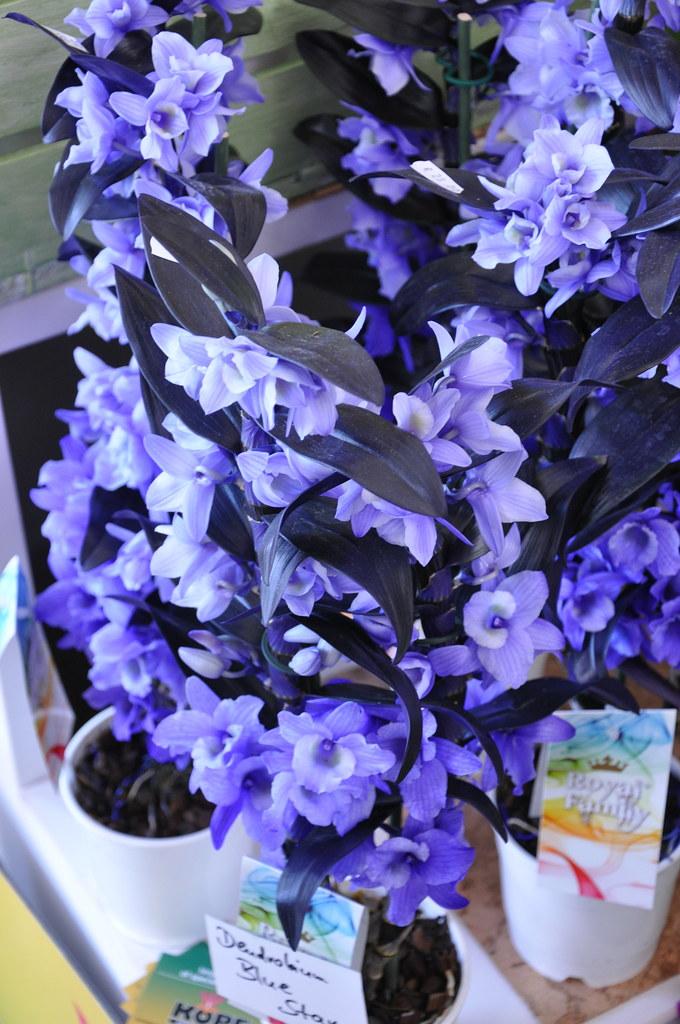
Dendrobium Blue Hybrid

Tie-Dye Dendrobium
RELATED: Why Do Orchid Leaves Turn Yellow — Step by Step Guide
Best or Worst Dyes for Orchids
According to cultivars, after successful tests, we learn about orchids’ best and worst dyes. All paints contain harmless chemicals, but some prove fatal to plants. Never forget that plants are living organisms, and they do not cry but die. Hence, before dyeing orchids blue, factual information about the type of dyes is a must.
Food Colors
Both photosynthesis and respiration are essential for the healthy growth of plants. If the outer surfaces of the plant body have thick layers of paint, they cannot get proper sunlight, oxygen, and essential nutrients. Food dyes are by-products of oil and coal that can be risky and kill plant living tissues. Only natural dyes made of milk, protein, spices, and lime are healthy and safe for orchid plants. Commercial blue dyes come in the E alphabet with index numbers E131, E132, and E133.
Stationery Ink or Watercolors
Serious killing solutions for orchids are stationary ink and watercolors. These are phytotoxic materials consisting of alcohols, amines, glycosides, oxalates, and toxalbumins. These phytotoxins function as plant poison. These toxic chemicals cause stunted growth, malformation and russeting of leaves and fruits, and dead leaf tips. Painting white orchids with such hazardous materials cause the death of the plant.
Floral Spray Paints
These are phytotoxin-free aerosols that are completely safe for plants. As the name indicates, some plant parts, such as colored flowers, form natural dyes. These crystal transparent floral dyes are famous for spraying the petals of flowers. For dyeing orchids blue, florists use “True Blue” for electric blue, “Design Master,” and Spring Pro Florist” for sky blue.
Floral Liquid Paints
These are unique noticeable paints used by creative florists for lovely dyeing orchids. Floral liquid paints are good water-soluble and spread very through plant tissues. After injection, flower buds receive the perfect smooth colors from base to margins. Expected results appear within 24 hours, leading to the full blossom of blue flowers. The best floral liquid paints available on the markets are “Vase color” and “Erelia.” Growers use these floristic paints by mixing them with tap water or injection.
RELATED: 9 Black Orchids Varieties (with Pictures and Care Guide)
How Cultivars Dye Orchids Blue — Three Result-Oriented Methods
Blue orchid blooms are uncommon in green life. Because of this reason, they are more valuable for enthusiasts. Orchid growers use two result-oriented and reliable methods to dye orchid flowers are blue. In the first most effortless procedure, growers dye orchids with colored tap water. The second one is trendily called the injection method.
Dyeing Orchids Blue with Colored Water
Materials:
- Cut White Flowers with Stem
- Water
- Vase color or Erelia or food color
- Container or Tub
- Vase or Pot
- Paper or Muslin or Wool cloth
- All-Purpose Humus Rich Soils
Method:
It is a fun, artistic activity that you enjoy with your family, even at home. Nonetheless, its results are not satisfying in some cases. Even Florists prefer this hassle-free method to dye their roses, daisies, and tulips. So if you want the same marketable blue flowers, then the water staining method must be on your brain.
- First thing first, cut the orchid flowers along with stem ultra-carefully
- Take lukewarm water in a container and add some drops of your preferred blue color. There is a lot of confusion about how much paint to mix with water. Before getting into the procedure, you must pay attention to the dyeing instructions. The best way is the careful reading of all instructions that come with colors
- Now put the cut orchid flowers with stems into a colored solution and leave them for a few hours. It may take all day and night for orchid flowers to turn blue
- When the flowers turn blue, take them out of the colored solution. Spread the blue flowers on wool cloth and let them dry for about 5 to 10 minutes
- Now, you can decorate dyed blue flowers in a water-filled pot or vase
Dyeing Orchids Blue by Injection
Materials:
- Orchid plant with flower buds
- Blade or Knife
- 1 to 2 mm Thick Syringe
- Floral Liquid Paint (Vase color or Erelia)
- Wax or Cinnamon
- Rubber Rings
Method:
This injection method is more satisfying. It works wonders where other staining techniques fail. Therefore, it needs good practice to suppress the risks it causes sometimes. Butterfly orchids, blue Phalaenopsis orchids, and Tie-dye Dendrobium are examples of this method.
- Select your preferred orchid with white flowers. Now prick flower stalks with a knife tip to make a tiny hole. In this way, you need to ensure that the hole you created should not be wide open.
- Take a sterile syringe and fill it with ready-made floral liquid paint. Experts recommend two floristic paints, the Vase Color and Erelia, for good results.
- Now inject the paint through the holes of flower stalks. Fix the syringe to the injecting site with a rubber band. Don’t pour too much liquid paint into flower stalks as it can come out of the holes.
- It will need 24 hours to show the best result, so wait until the flowers get the proper blue color.
- Seal the injecting holes with wax or cinnamon to prevent any infestations.
Dyeing Orchids Blue by Floral Paint Spray
Another playful and safe way is spraying floral paint on fresh and dried flower petals. To do artwork like a florist, always use dried fruit and turmoil aerosol sprays for your orchid flowers. The use of floral paints is not rocket science. You only need to clean your orchid flowers first, take a spray bottle and apply spray paint with many layers on the flowers. These floral paints contain UV and provide moisture to dried flowers.
A Serious Issue while Dying Orchids Blue
Overloading of dyes is a common hate problem for orchid cultivars. It occurs in some cases when injecting areas or holes remain open due to the poor wax sealing. As a result, the excess dye may start flowing out through the injecting holes.
This leakage is a severe problem leading to the spread of paint everywhere.This absurd situation is too much to handle. It will make your furniture and clothes useless because of unwashable stubborn stains.
Before you face such damage, when buying any dyed orchids from a florist, make sure they are well-sealed. A plant full of excess dyes means its death. Plant respond immediately to save themselves by throwing out excess dyes through their open areas.
What you need to stop the leakage
- Dyed Orchid Spikes
- Disposable Gloves
- A Razor or sharp Knife
- Ground Cinnamon
- A Vase or pot
- Charcoal
Immediate Actions to Prevent Leakage of Dyed Orchids
- If you want to keep your dyed orchid alive and avoid the resulting losses caused by the dye leakage, you must go through the safety steps given below:
- First, wear the disposable gloves on your hands to prevent the stubborn dyes
- Take a careful, thorough look at your orchid. Now remove the dyed flower stalks with a razor that caused the leakage
- Seal the cut areas of the stem with ground cinnamon. It will protect the orchid from decay and infections
- Take a vase or pot full of humus-rich soil to grow your cut orchid stem in it. We Hope, You can have new blooms too soon
- When your orchid drops off leaves, it is not a good sign. Mix the charcoal with all-purpose soil in the potting medium. Charcoal miraculously functions by absorbing the toxins and impurities caused by dyes. This application can cut the risks
Blue Dyed Orchids Care
Some favorable environmental factors are must-watch after dyeing orchids are blue. Otherwise, they may die if they do not withstand extreme conditions. Experts suggest a greenhouse-like environment that is ideal for dyed orchids.
If you want to keep your dyed orchid alive and healthy without any loss, consider all the ideal conditions are given below:
- Remember that all orchids need direct full sunlight during the day. On the flip side, night temperature should be less for their procedural growth. Thus, day temperatures from 22 to 25 C and night temperatures around 15 C are perfect for orchid growth.
- Follow the wet and dry method for constant watering of the orchids. Well-drained gritty soils are best as such types of fertile soil get dry instantly.
- Air moisture between 60 to 80 % will do a great job. Extreme humidity leads to fungal and pest infestations that can infect injecting areas. Also, excessive floral spraying can over moisten the orchids, which is fatal.
Do the dyed orchids give off new blue blooms?
Blue dyed orchids are hybrids that came to the fore by human intervention. The artificial techniques used to create dyed orchids cannot change their genetic makeup. The dyes injected into the one group of flowers will turn them blue for one blooming cycle.The orchid blooms will remain blue until they wither. If the injected dye ends in the flower stem, it may lose its blue color. When the same dyed blue orchid produces a new group of fresh flowers, they will surely be white.
It is an embarrassing moment when you see your dyed orchid with two-colored flowers. It makes the staining tricks of fake orchids even more evident. Here, you can trick your orchid with another easy method. If you want to see the following new flowers in blue, you have to inject blue dye into the flower stem at the bud stage.
The Existence of True Blue Orchid in Nature
Have you ever had the experience of being spellbound by some attention-grabbing blue orchids while shopping? Oh my God! They were not natural blue orchids; they were their alternative hybrids. Blue color seems rare in natural wildflowers, so man introduced dyed orchids to the world. The Orchidaceae family has some original but expensive blue orchid species listed below:
- Vanda coerulea
- Vanda coerulescens
- Pescatoria coelestis
- Thelymitra crinita
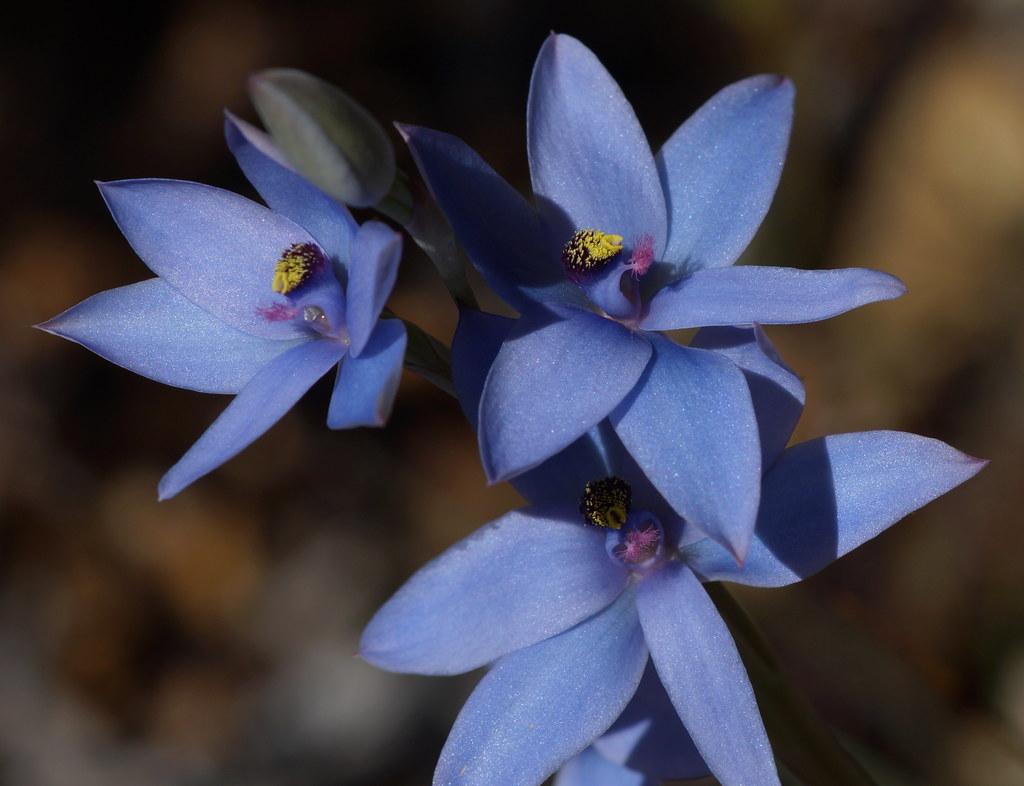
Thelymitra crinita
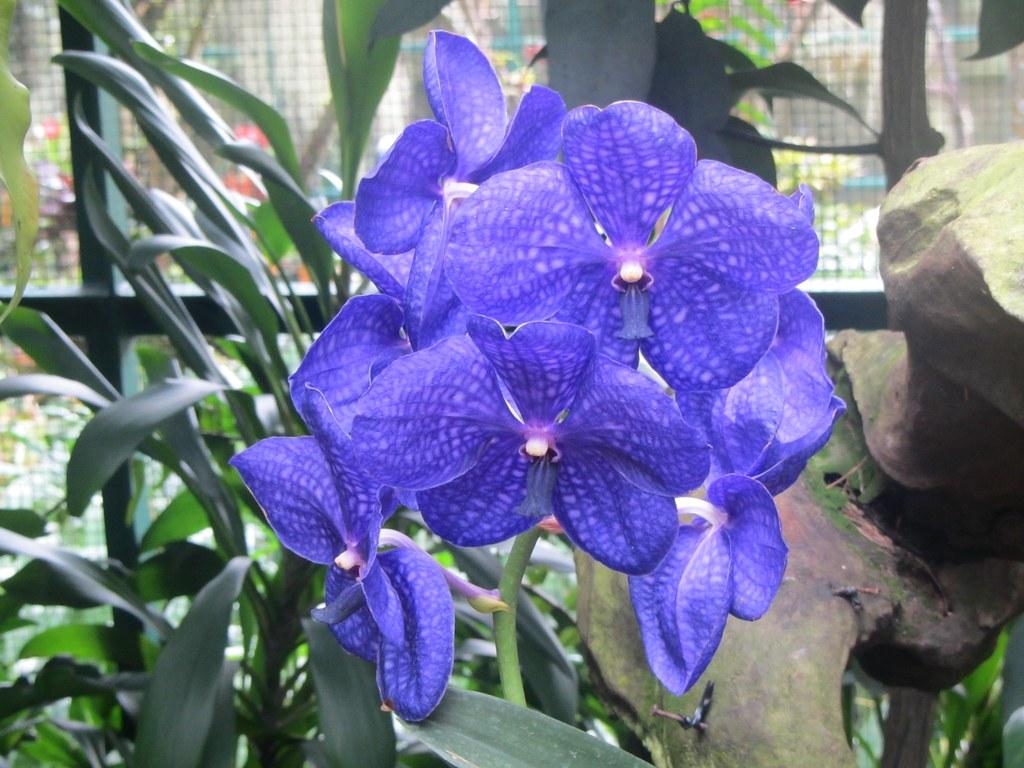
Vanda coerulea
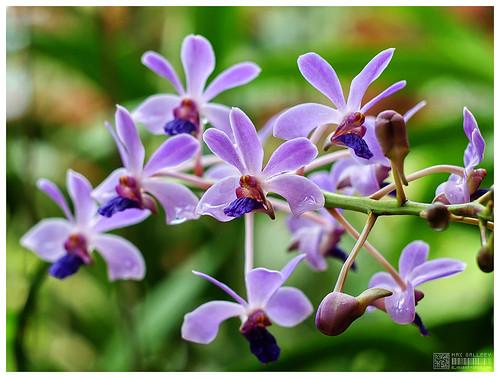
Vanda coerulescens
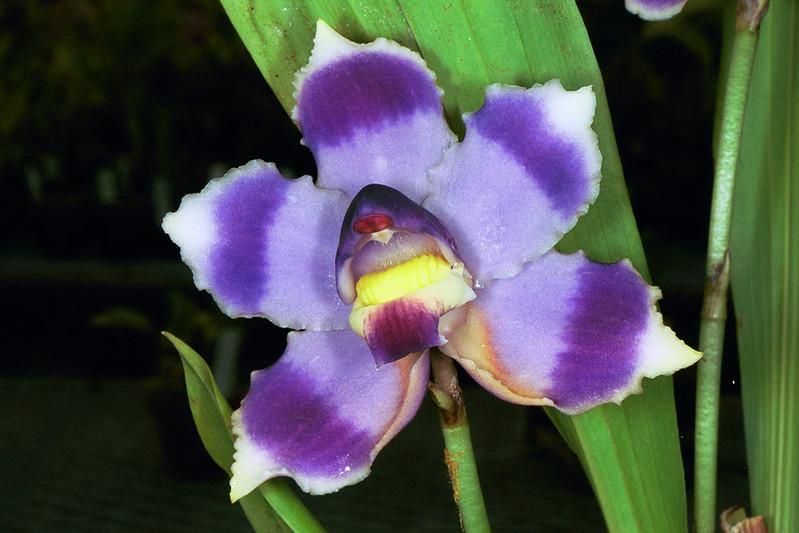
Pescatoria coelestis
Frequently Asked Questions
How can you dye orchids blue?
Dyeing orchids blue is very simple, like DIY methods at home. You can dye orchids like dyed tulips and roses by using two popular techniques, submersion and injection. In the submersion technique, you need to cut white flowers with stems and prepare a solution in a tub by adding 1 or 2 drops of blue food color.
Submerge cut flowers in the colored water for 5 to 6 seconds and immediately remove them from the water. Wait until the soaked flowers are dehydrated. It is the quickest and easiest way to paint your desired plants, but sometimes the results are unsatisfactory.
The dye-Injection technique is more satisfying as it shows excellent results than submersion. In this method, you will have to puncture the stem to insert the hypodermic needle and then inject the blue dye. With Infusion, many horticulturists created extraordinary orchids like a Blue mystic, Phalaenopsis, and Bromeliads.
Are there true blue orchids?
Blue orchids that we see in nurseries and florist shops are fake-dyed orchids. True blue orchids are rare in nature, and getting them is not easy. 9 to 10 % of species of flowering plants produce blue pigment.
However, the natural rarest orchids with original blue flowers are Blue Vandas, Thelymitra crinita, Boella coelestis, and Pescatoria coelestis. Blue orchids are sparkling mystic plants that can brighten any dark, dull place.
How long do blue dyed orchids last?
The lifespan of blue-dyed orchids depends on the intensity of blue dyes. Light colors have fewer chemical effects compared to dark or deeper colors. With that in mind, if you dip the white flowers of an orchid in light blue dye, they will last after 7 to 10 days. On the contrary, if the orchid flowers are given deep blue paint, they will last from 3 to 5 days.
Blue flowers of orchids are precious artifacts that create engaging and pleasing effects at weddings and festivals. As bouquets or presents, they express your affection, honesty, and devotion to your loved ones.
What causes blue orchids to turn white again?
Most blue orchids are artificially created with synthetic dyes that cannot be transferred to newly born flowers. It is because whenever we apply the blue paint to white flowers. Doing so will only affect the coloring genes of flowers we choose for dyeing purposes, but the whole plant remains unaffected.
Synthetic dyes cannot change plants’ genetics, so new flowers of blue orchids are white, not blue. Therefore, we often forget that plants are living organisms that can die if we examine them with these artificial dyes.
Editor’s Recommendations
Blooming Beautiful: 22 Different Types Of Orchid Trees







